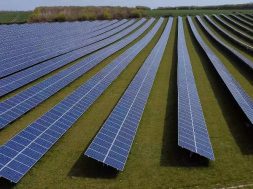
Cell prices rose marginally amid continued upward price trends in mid and upstream segments
Polysilicon price
This week, polysilicon prices rose again as supply remained short. Large orders between major manufacturers were signed at RMB 135-140/kg; sporadic ones were even signed at RMB 140-145/kg.
In anticipation of severer polysilicon shortage in the second half of the year, the upward trend is expected to continue, and prices will increase marginally in the second half of this month. As polysilicon prices continue rising after reaching the peak amid mild end user demand, manufacturers in the mid and downstream segments are anxious about the polysilicon prices following the recovery of the market in Q3.
Prices in overseas markets is forecast to rise in the recent term with trading prices fluctuating rapidly. Presently, trading prices in the overseas markets are still higher than that in the Chinese market, sitting at USD 18-18.8/kg and continuing to rise. This week, negotiations for multi-grade polysilicon orders are still ongoing; prices did not see evident increase.
Wafer price
In April, production of some mono-Si wafer manufacturers have fallen behind expectations, due to the difficulties in acquiring sufficient polysilicon. As mono-Si wafer supply failed to meet cell makers’ procuring amount, prices remained on the rise. This month, Zhonghuan released pricings as followed: RMB 3.81/piece for G1 (158.75mm) mono-Si wafer with a thickness of 175um, RMB 3.98/piece for M6 (166 mm), and RMB 6.33/piece for G12 (210mm). A small portion of M10 (182mm) transactions have started reflecting the price hikes. On April 15, Longi released pricings as follows: G1 and M6 wafers with 170um thickness are priced at RMB 3.9/piece (USD 0.53/piece) and RMB 4.00/piece (USD 0.544/piece), respectively, up by 0.25/piece. M10 wafers increased by RMB 0.3/piece to RMB 4.86/piece (USD 0.66/piece). The comprehensive wafer price increases have sent the cell sector, which has already been struggling to sustain cash cost, into harsher predicament. After this round of price increase, cell makers will reduce utilization rates further in the face of deficit.
Multi-Si wafer prices continued to reflect the previous polysilicon price hikes, having been traded at RMB 1.85-1.95/piece this week, to which prices in the overseas markets also rose in accordance.
Cell price
Wafer manufacturers have been adjusting prices since mid-April. This week, in anticipation of a continual upward trend in wafer prices, cell makers raised pricings to RMB 0.01-0.03/W. Module and cell sectors are still in standoff. Only few module makers signed orders at higher price range, with RMB 0.87-0.88/W for M6 cells. Most vertically integrated manufacturers postponed negotiations this week, waiting for new pricings in April.
Demand for G1 cells continue to fade, resulting in growing inventory. This week, trading prices stayed where they where last week, sitting at RMB 0.88-0.92/W; high price range begun to narrow down. However, the decline of G1 cell prices has slowed, considering the continued price increase in wafer prices.
Business of large cells still rely on OEM and dual distribution model at present; trading volumes are rather weak with low direct purchase amounts. This week, cell prices fluctuated slightly in response to wafer price hikes. M10 cell prices stayed unchanged at RMB 0.88-0.9/W as last week; G12 were traded at RMB 0.88-0.91/W.
Being affected by price hikes in the upstream, average prices for cells continued to surge, coming in at RMB 3.2-3.3/piece. High price range sees lower trading volumes, with prices sitting at RMB 3.4-3.5/piece. Module manufacturers can hardly take the RMB 3.4-3.5/piece of cell cost, considering their cost affordability. Multi-Si cell prices are projected to have reach the peak for the short term; price increases will begin to slow.
Module price
The significant slump in glass prices has brought module sector RMB 0.04-0.05/W of cost reduction. In the Chinese market, a few orders see RMB 0.01-0.02/W of decrease. However, profits squeezed from the glass sector has been eroded by this round of polysilicon and wafer price hikes.
Polysilicon prices kept soaring amid the low season, overshadowing the costs of module manufacturers in the second half of the year. For now, module price quotes of the year remained stable. Modules with a power output exceeding 500W were mostly traded at RMB 1.68-1.72/W in the recent term.
With the recovering Indian demand and fewer multi-Si suppliers, the increasing polysilicon costs have been rapidly reflected in multi-Si wafer and cell prices. In the meantime, module prices also rose marginally in response to the higher costs, having been traded at RMB 1.45-1.5/W.


















